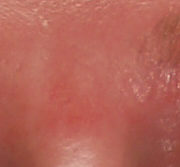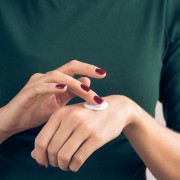Acrylics Update
Voller LM, Warshaw EM. Acrylates: new sources and new allergens. Clin Exp Dermatol. 2020;45(3):277-283. doi:10.1111/ced.14093
Reviewed by Jalal Maghfour and Alina Goldenberg MD
Acrylates, a group of synthetic thermoplastic resins, are becoming essential in industrial societies; they are commonly found in various nail products, adhesives, insulators, paints and windshields. Acrylates are known to cause allergic contact dermatitis (ACD) with the first documented case dating from 1941. ACD resulting from acrylates has been well-documented in the literature. In fact, acrylates were listed as the 2012 allergen of the year by the American Contact Dermatitis Society (ACDS).
Given the emergence of new sources of acrylates the aim of this synopsis is to highlight ACD associated with non-occupational and occupational acrylates exposure.
Non-occupational ACD secondary to acrylate exposure has been commonly reported. In 1995, Isobornyl acrylate (IBOA) was first documented to induce ACD during insulin infusion pump. Most recently, IBOA was isolated from the adhesives used primarily in many medical devices such as insulin pump and glucose monitors. This has resulted in IBOA becoming recognized as the 2020 allergen of the year by ACDS. Thus, diabetic patients and healthcare providers are particularly vulnerable to ACD due to IBOA.
Acrylates contained in various artificial nail preparations are also a major source of sensitization. Cyanoacrylates are used in cosmetic and medical glues. There have been reports of ACD due to Dermabond which is a common surgical glue, due to its 2-octyl and cyanoacrylate ingredients.
Occupational exposure to acrylates is also frequent. Nail technicians are at high risk for developing acrylate allergy. Other fields such as orthodontists and dental technicians may be at increased risk for developing ACD given that the wide use of methacylates in dental prostheses.
As with any ACD, patch testing remains the gold standard diagnostic modality. Once an acrylate sensitization is diagnosed, patients should be adequately counseled on avoiding any cosmetic or industry products that contain acrylates. Workers at high-risk of exposure are recommended to wear trilaminated polyethylene gloves which confer protection up to 4 hours.







